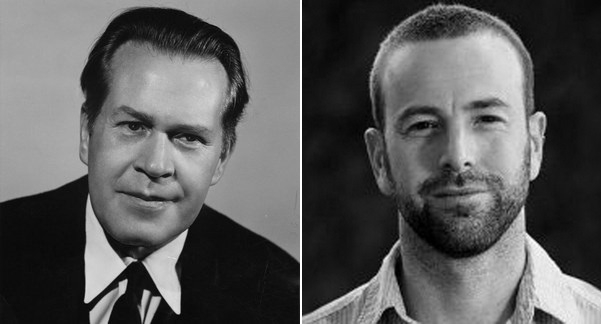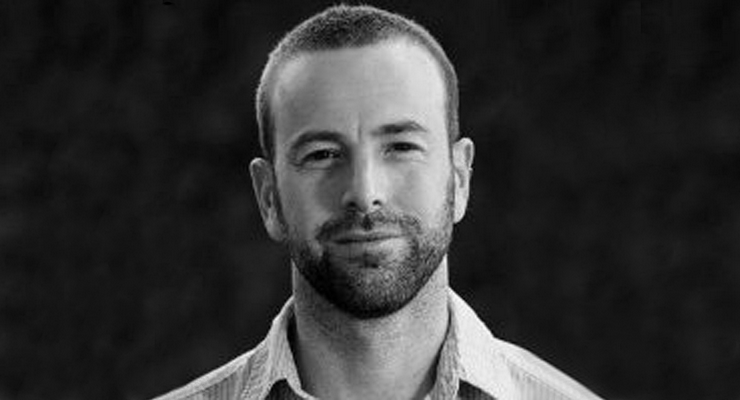Poised at the theater’s 100th year “pivot point,” Producing Artistic Director Danny Feldman talks about the Pasadena Playhouse’s past, present and future as he readies for this Saturday’s centennial birthday party.
When the Pasadena Playhouse assembled its first group of performers, World War I was devastating Europe and women had not yet won the right to vote in the U.S.
Organized in 1916 by an innovative and irrepressible theatrical director and actor, Gilmor Brown, the Pasadena Community Playhouse company first performed in a burlesque hall. By 1925, spurred by the ambitious Brown, the Pasadena community had come together to fund and build for the performers what was the largest theater complex in the United States west of Chicago.
A lot has changed in the past 100 years, but through it all, from its early days as a community-run theater to its rise to a world-class performance venue, the small “stage that could” has persevered and now embraces a future that will draw from both legacies.
Reflecting on the Playhouse’s past century of drama both on and off the stage, Playhouse Producing Artistic Director Danny Feldman said he’s excited about what’s to come.

“We’re looking forward by putting a firm foot in the past, honoring our history, honoring the fact that this was a leading center of theater; a place where Eugene O’Neill and Tennessee Williams had world premieres,” Feldman said earlier this month. “This is an important theater center and we continue that in a straight line to what we’re doing today.”
Act I: Humble Beginnings
“The very first performance happened for the 1917-1918 season and (dancer) Martha Graham, of all people, was actually the first person to speak a word on the stage of what would become the Pasadena Playhouse, which I think is fascinating,” Feldman said.
“As I really dug into the history of the Playhouse, I discovered that there was a deep, deep connection, more than almost any other institution I could find, between a community and a theater,” he said.
“When the Playhouse was founded, community members were a part of the shows. They helped make the costumes, they helped promote the show, they were in some of the shows as a chorus. There was not really a line in the sand that we have now between a professional actor and a community member,” Feldman added.
But Pasadena’s artistic gem didn’t remain secret for long. It soon blossomed into a celebrated bastion of performing arts, becoming the State’s official theater in 1937.
Act II: The Star Factory
A decade after it opened, the Playhouse launched the College of Theater Arts, which earned the nickname Hollywood’s “Star Factory.”
Alumni of the school include Ernest Borgnine, Charles Bronson, Jamie Farr, Gene Hackman, Dustin Hoffman, Angela Bassett and Wayne Brady, just to name a few.
Students often lived in nearby homes, which were converted into dorms.
“The Playhouse had a school before there were things like (Master of Fine Arts) acting programs,” according to Feldman. “In fact, many of the MFA programs around the country are based on the curriculum that was developed here at the Playhouse, which I find fascinating and inspiring.”
Founder Gilmor Brown died in 1960. The Playhouse, without its visionary helmsman, struggled as USC and UCLA opened theater departments and competed for students. The theater went bankrupt and shut down in 1969. But volunteers preserved the Playhouse and succeeding in a quest to get it declared a state landmark.
Businessman and developer David Houk helped renovate and ultimately reopen the Playhouse in 1986. Sheldon Epps joined the Playhouse as Artistic Director in 1997, and adopted an agenda of innovation. The theater became well known for its emphasis on diverse content and casting, new musicals, and growth in the areas of education and new play development.
In 2006, The Carrie Hamilton Theater, named after the late daughter of Carol Burnett, opened, giving the Playhouse a second and more intimate performing space. But the financial struggles continued.
Four years later, Pasadena Playhouse filed for Chapter 11 bankruptcy, throwing season ticketholders into chaos and raising questions about the theater’s survivability.
But survive it did. The theatre re-emerged, reorganized and financially sound, thanks to a gift from a million-dollar anonymous donor and debt cancellation.
After his 20-year-run of reinvigorating and restoring the reputation of the Playhouse as a world-class theater, Epps retired last year. The Playhouse welcomed Feldman, formerly of the Labyrinth Theater Co. in New York as its Producing Artistic Director,.a new position combining artistic direction with the business and administrative duties of executive director.
Act III: The Show Must Go On
Feldman said he’s looking forward to helping forge the next chapter of the Playhouse’s history.
“We’re looking at different ways to make more of a broader statement, not only at the state level but on the national level,” he said. “We’re doing world premiere plays that go on to other places… people all around the country take note of what we’re doing… there’s great pride in that. And I think the City of Pasadena and the community of Pasadena in these last 100 years have had moments of deep pride in the Playhouse, and they’ve had moments where they felt that the Playhouse lost its way.”
While the Playhouse isn’t going to go back to its amateur origins, increasing community involvement is a key part of the theater’s mission moving forward, Feldman said.
He said that more classes and other opportunities for Pasadenans to get involved with the theater are in the works.
Feldman said the Playhouse is striving toward serving a “broader base.”
“Some of that,” he said, “frankly means altering our programming in a certain way.”
“This season we had “Our Town” and “Pirates of Penzance,” Feldman said, going on to observe that on the same stage as those two stalwarts the Playhouse staged a world premiere of “Bordertown Now,” “the first time we’ve had an all-Latino creative team.”
“That’s profoundly important to really expand the canvas of the work we’re doing here,” he said.
Join the Pasadena Playhouse for a celebration of its 100th birthday party from noon to 10 p.m. Saturday, June 9, at El Molino Avenue and Colorado Boulevard. The community is invited and there is no charge.
The party will feature live music, performances by more than 20 groups on two stages, more than two-dozen interactive exhibits, games, a kids’ zone, tours of the Playhouse District and the Playhouse, food trucks, drinks, and a formal ceremony mid-day.
Presented in partnership with the Playhouse District Association, the free event will feature performances and contributions from local museums and other prominent arts, dance, music and theatrical groups and organizations, including Armory Center for the Arts, Ballet Folklorico Quetzal, Bob Baker Marionette Theatre, Culture Clash, Pasadena Civic Ballet, Pasadena Dance Theatre, Pasadena Symphony and POPS, PCC Jazz Combo, PCC Opera and PCC Theatre.

















